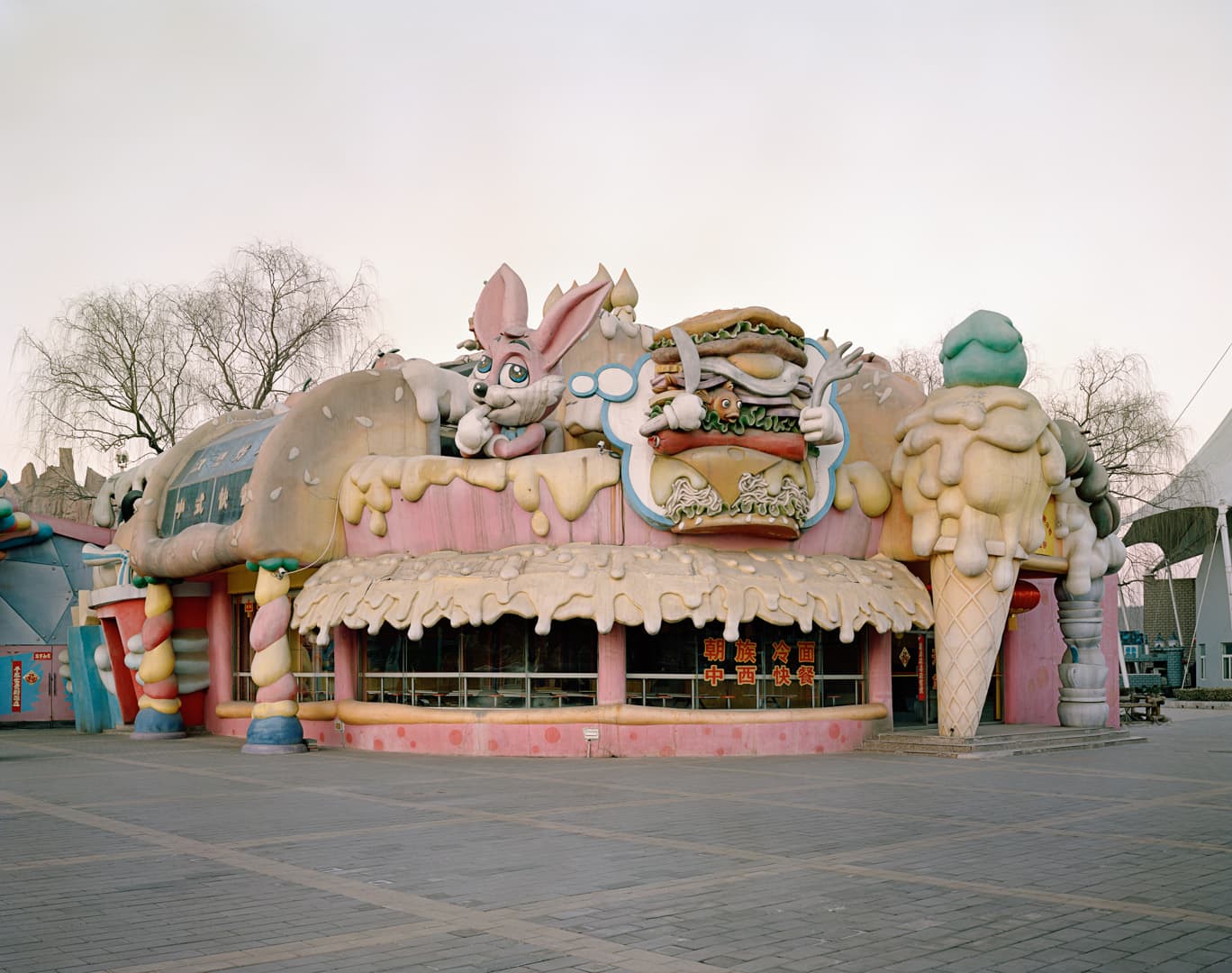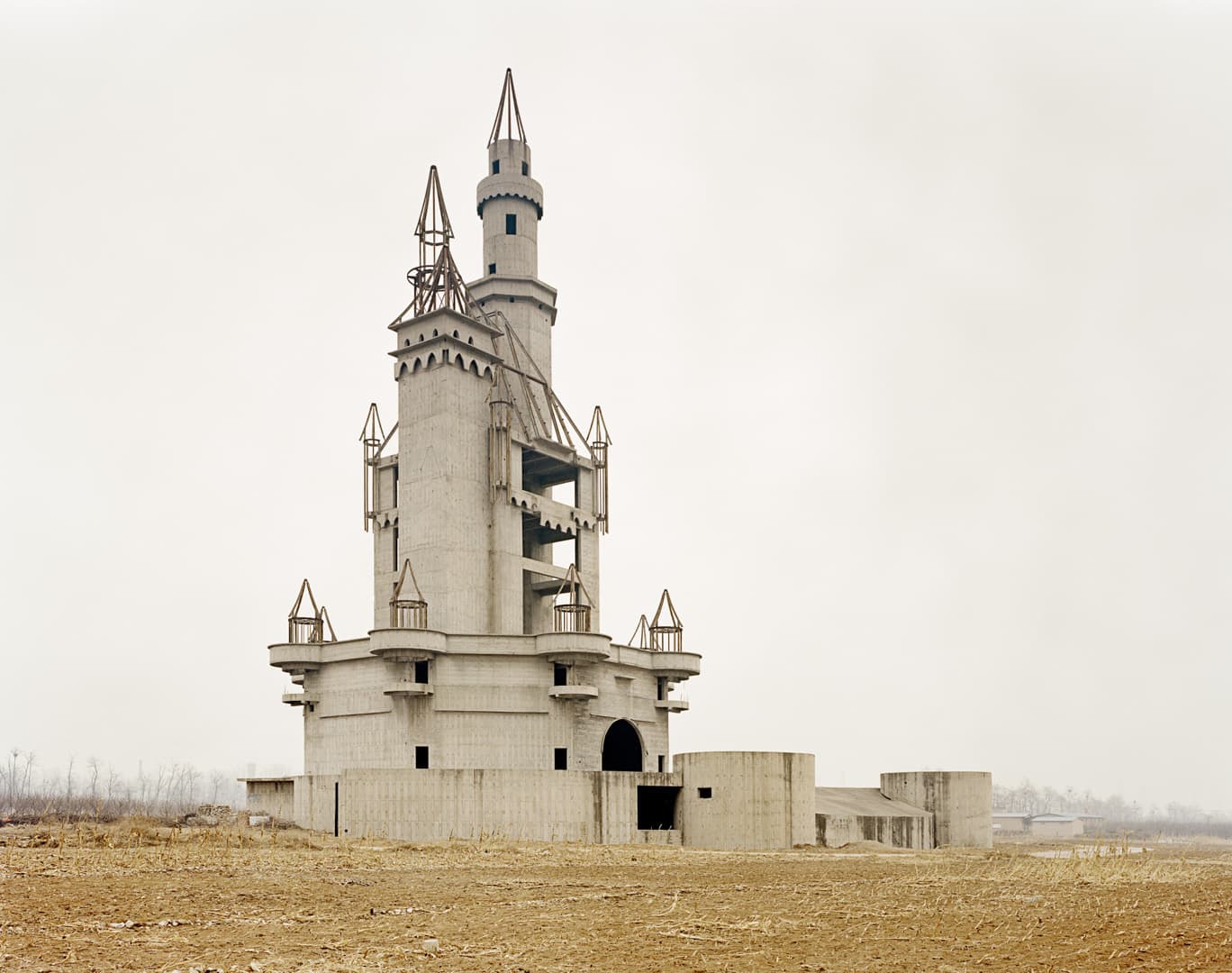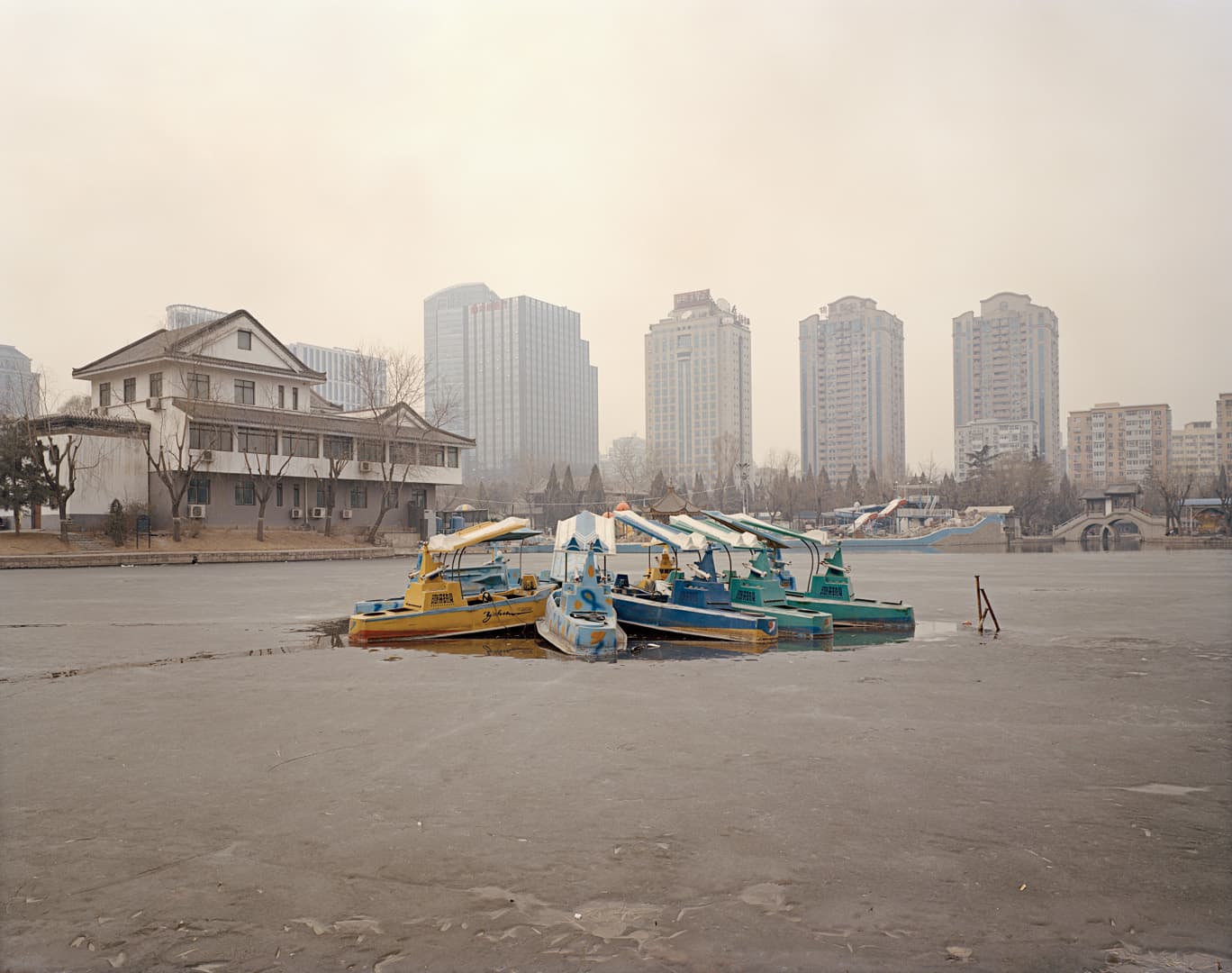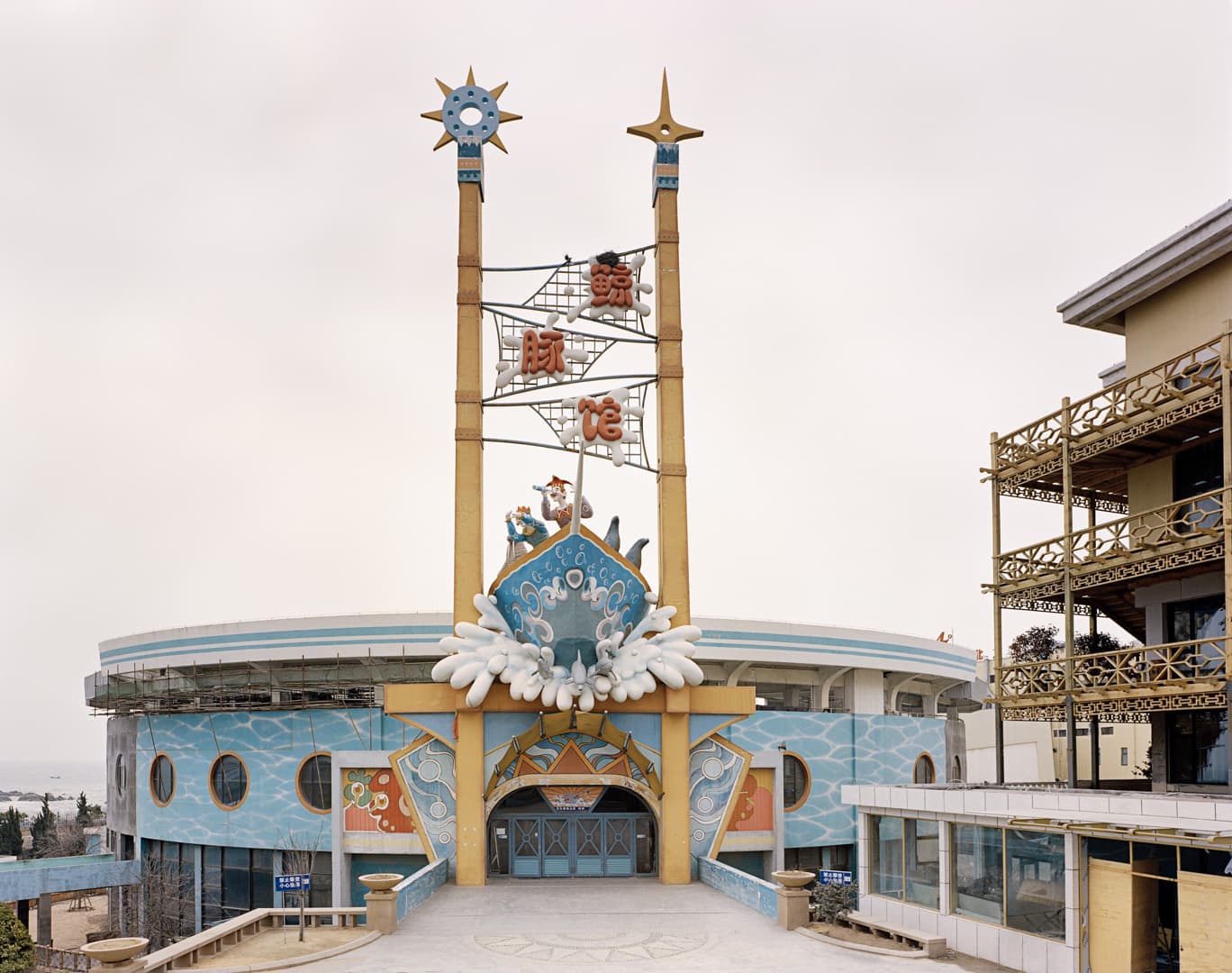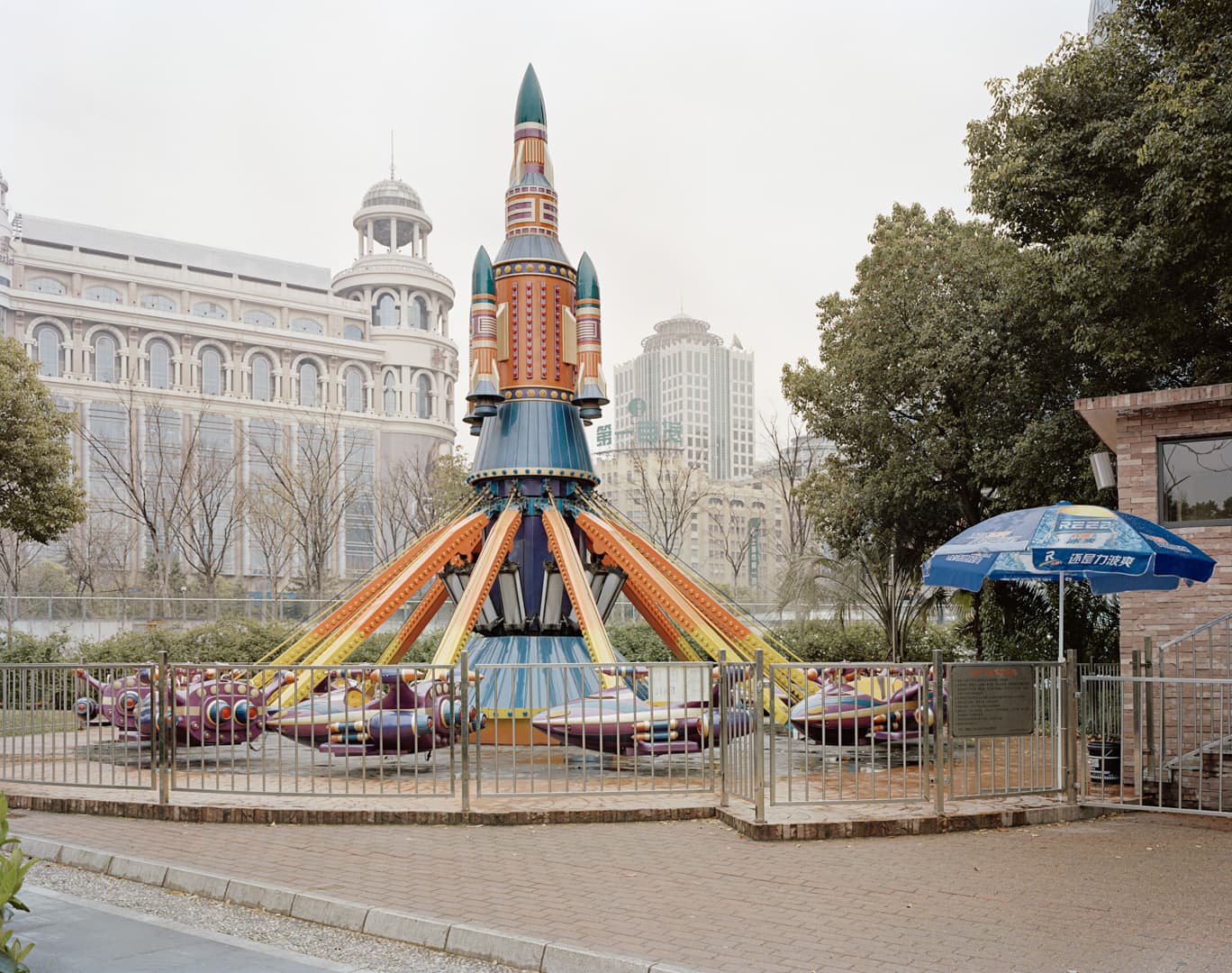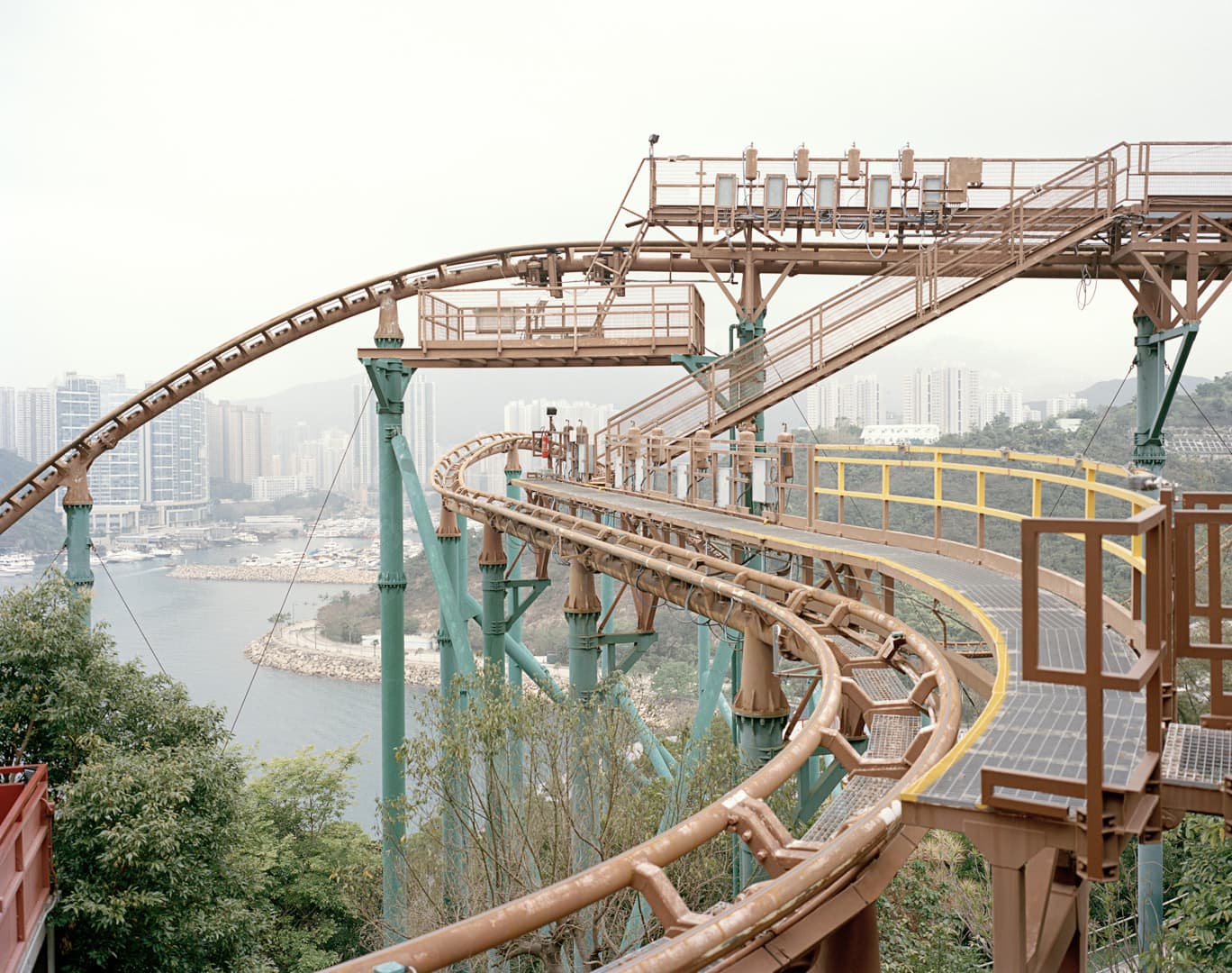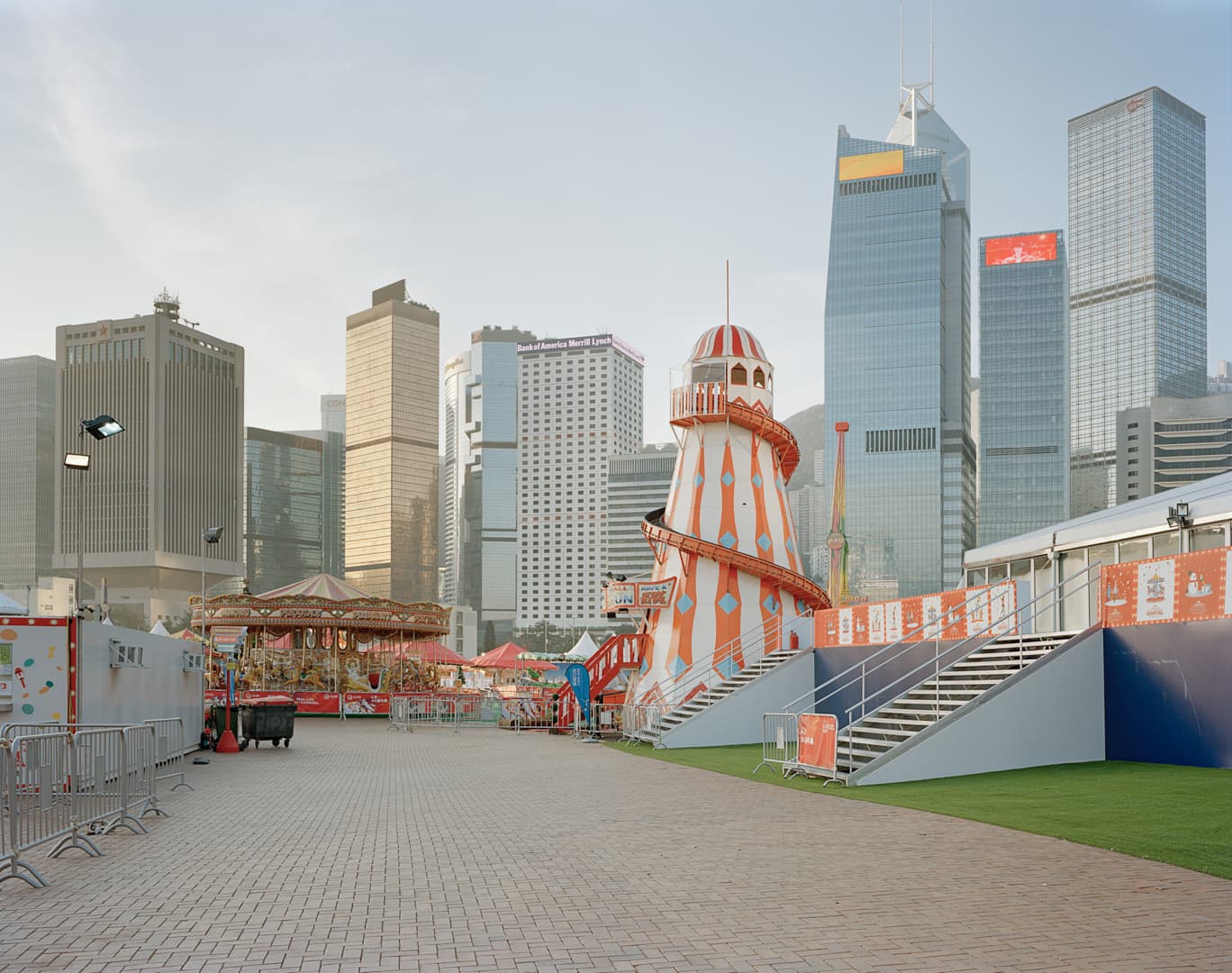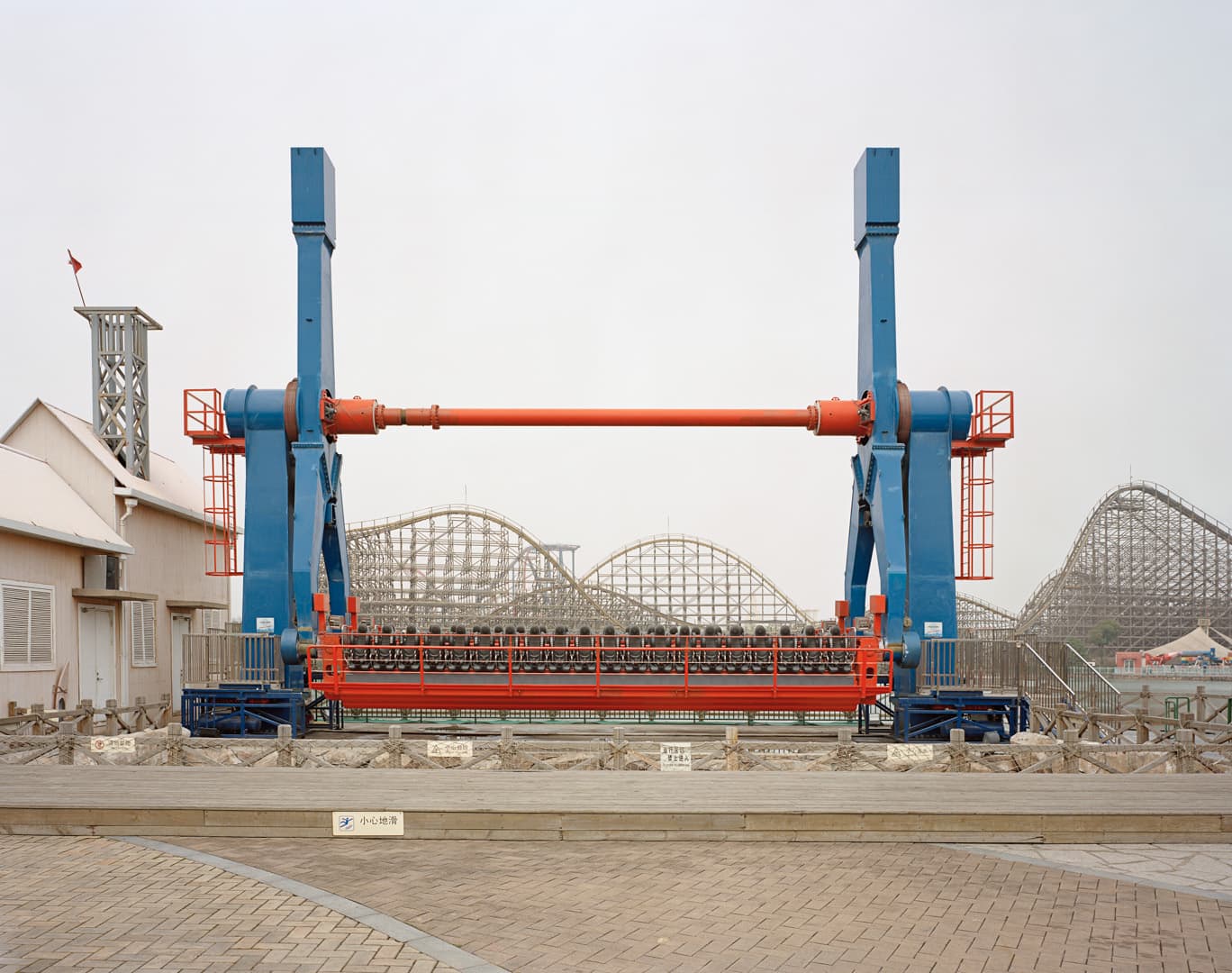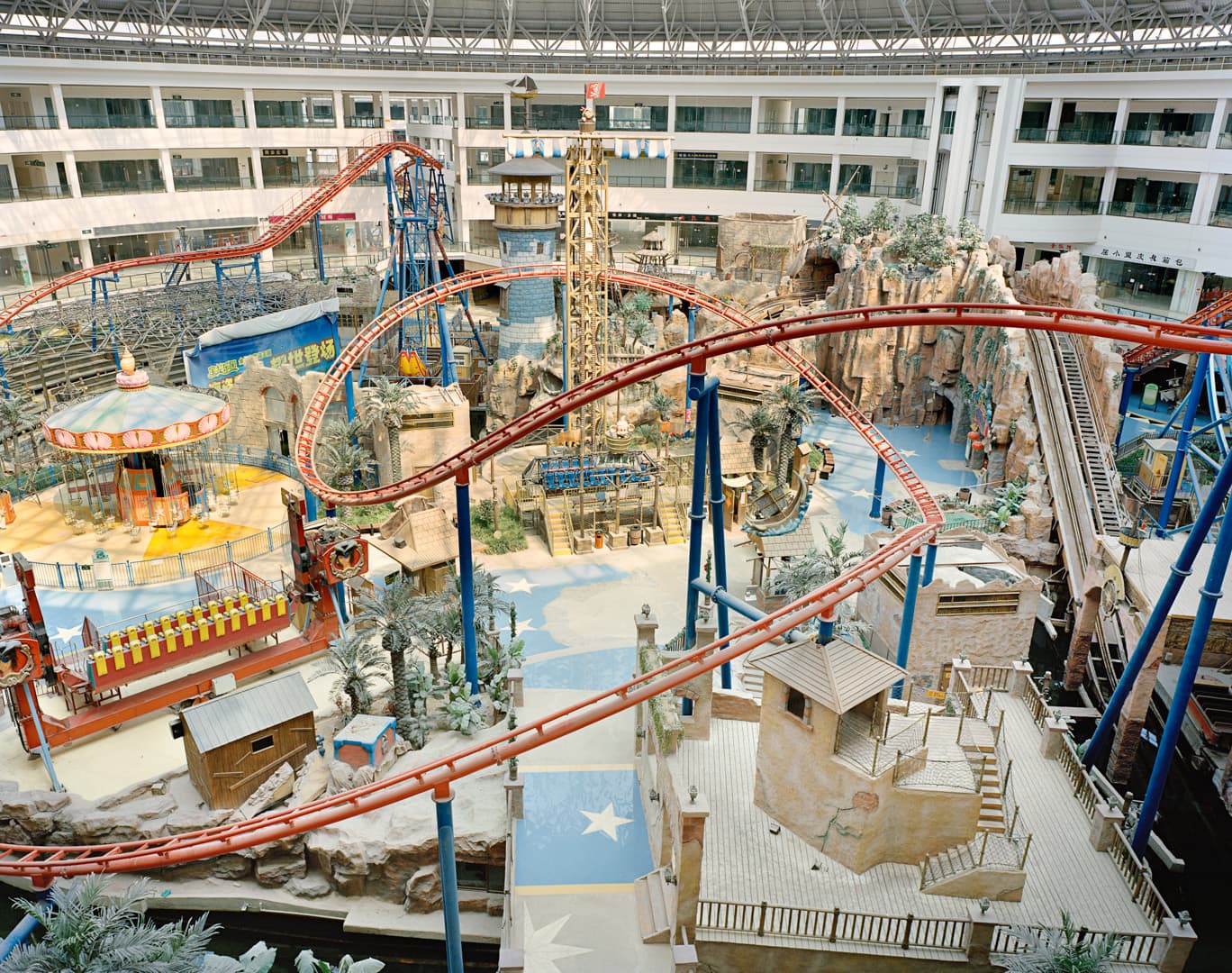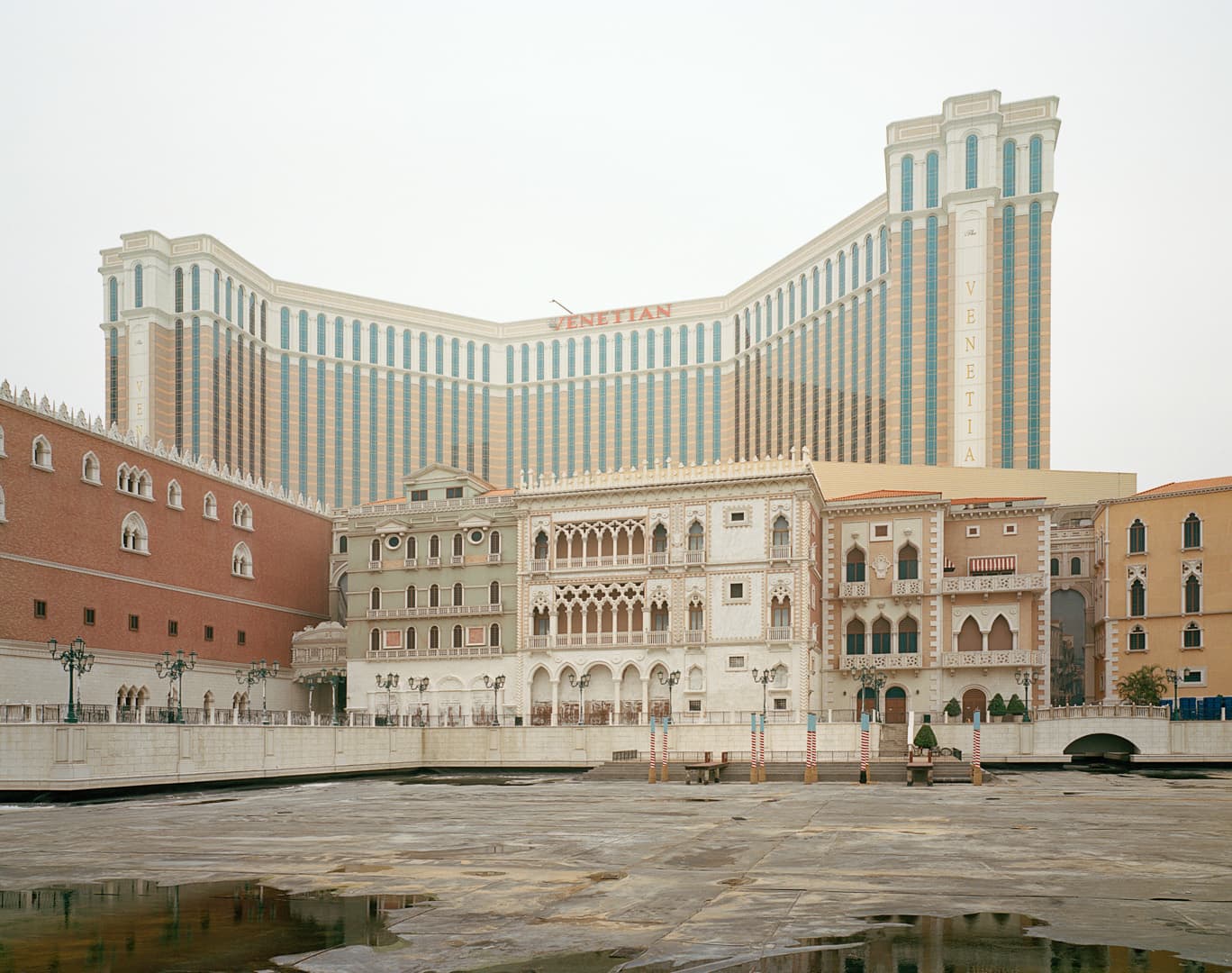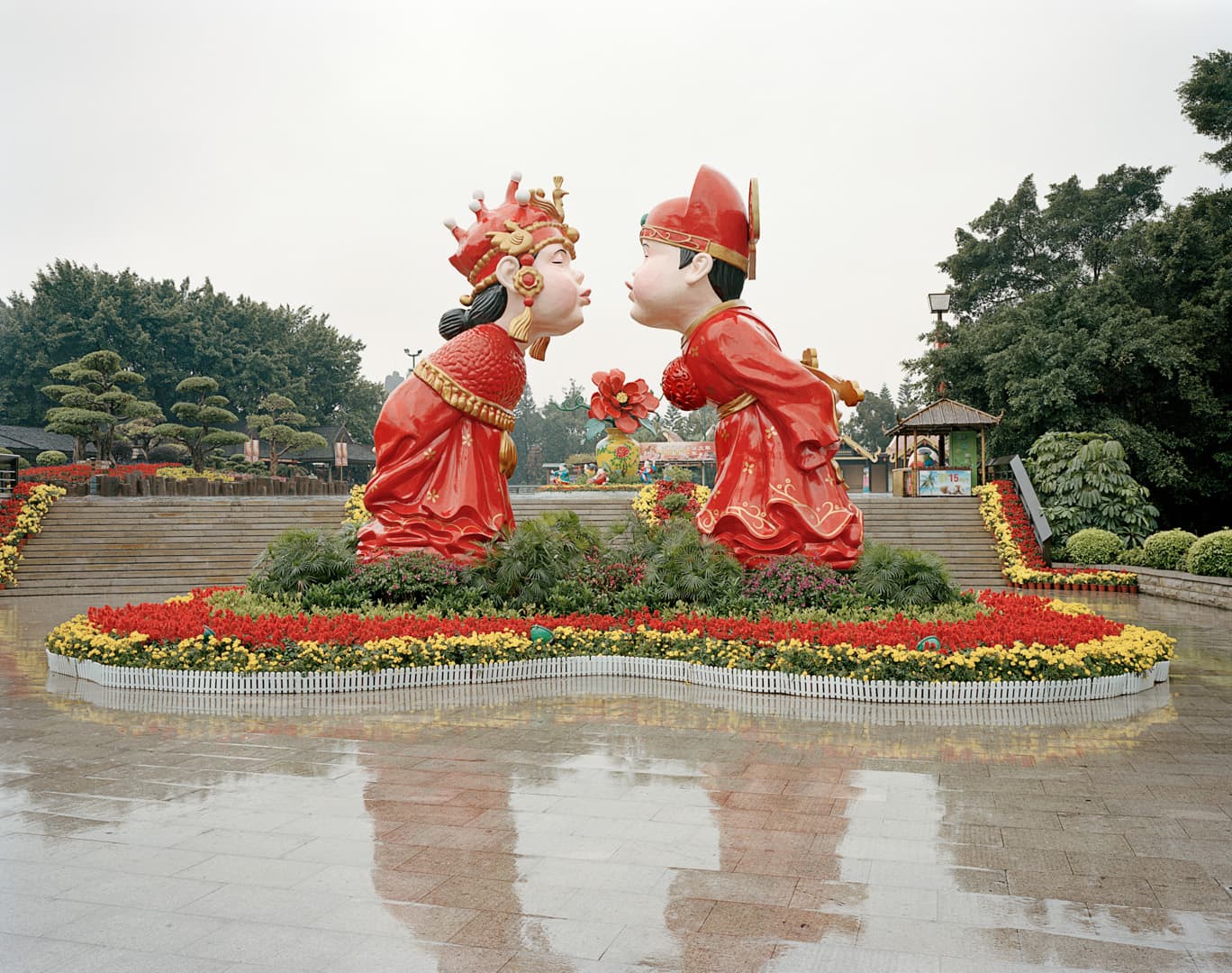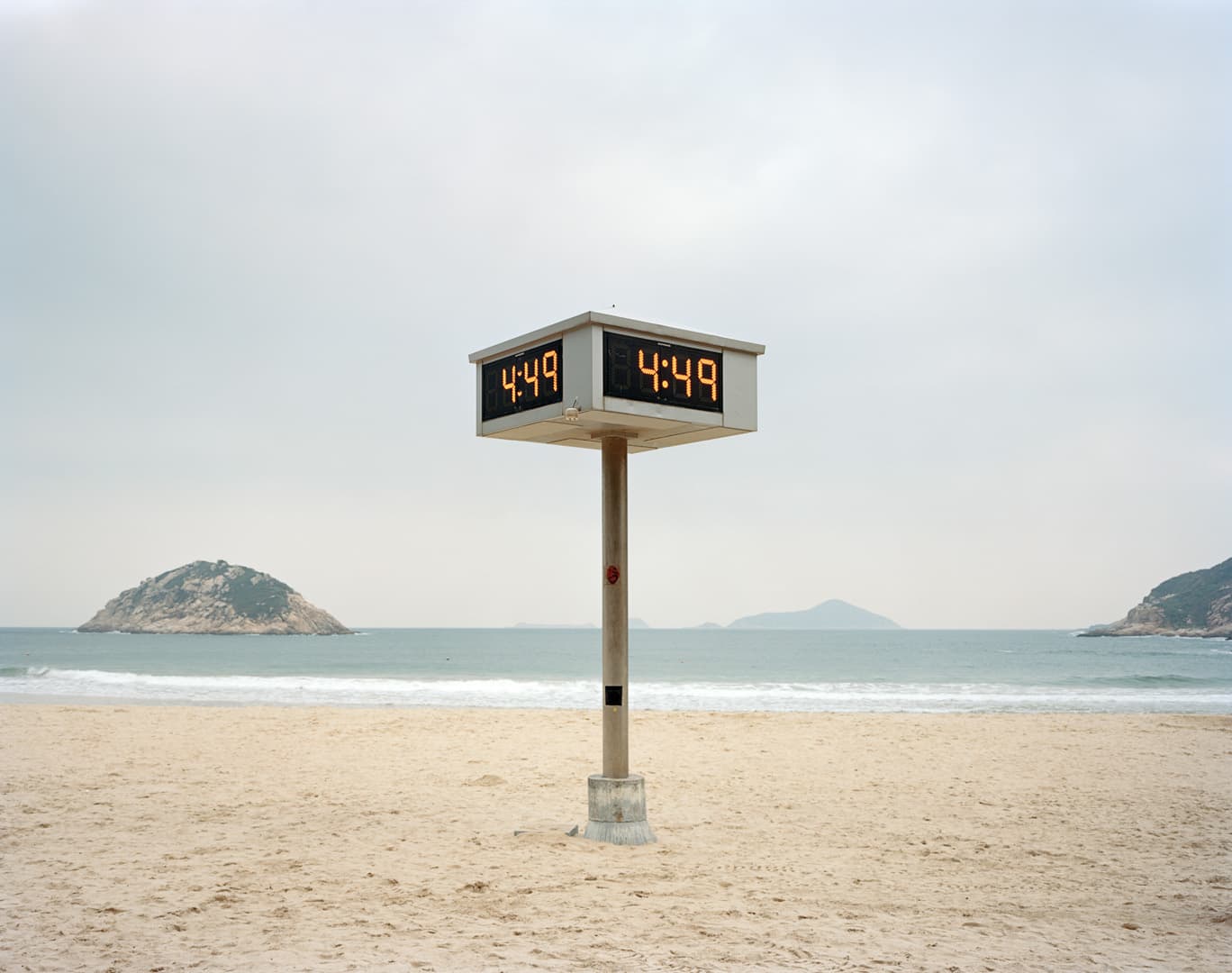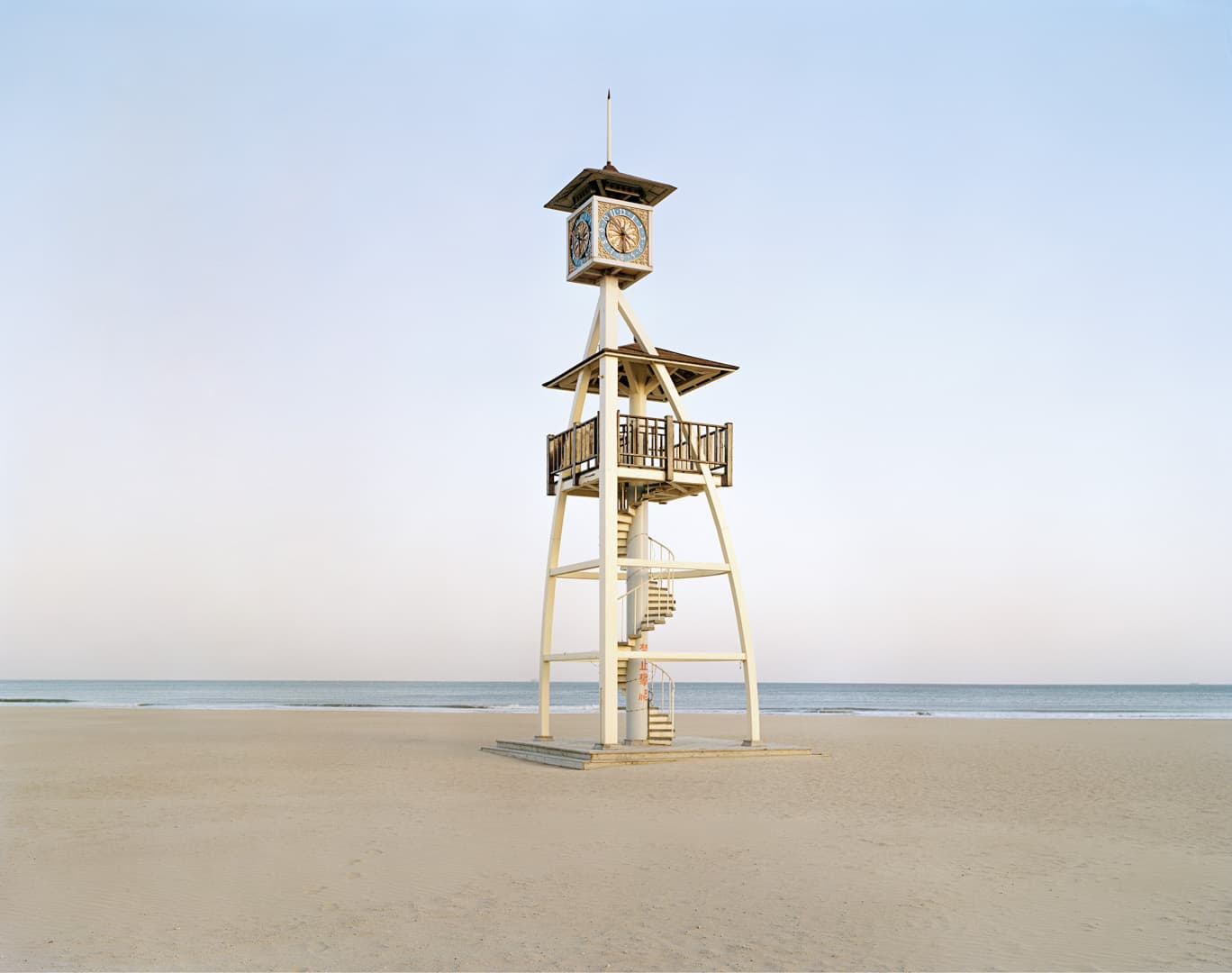Descartes in China
Walter Guadagnini
A white pianoforte, scarred, scraped, seemingly without a keyboard, occupies the left part of the photograph; to the right, in the background, the remains of a passage, maybe the entrance arch of a building that is hard to identify—it’s too small to be a castle—topped by a canopy of wood and thatching; to its right there is a ruined wall, and there is a ladder to its left, probably leading to the canopy. The pianoforte and the ruin are the only two presences in a desolate, arid landscape; there are a few trees behind them, also bare, with nests in the branches of two of them. Behind a hillock a house can be glimpsed, farther away, and at an even greater distance the horizon of higher ground can be seen, whose nature is impossible to decipher: hills, maybe mountains. The sky is a milky mass, gray like the earth but denser and therefore less expressive, still.
Same ground, same sky, but now the composition is dominated by a building under construction; the color is that of the concrete, the form that of an invented castle, more Disney than Ludwig. The overall effect is that of a bunker, which due to some prank of history, someone has decided to transform into dream architecture, while only managing to create a nightmare. These are the only two images—among all those in my possession as I write—lacking in any element of recognition of the place where they were made (actually, on closer examination, the first one does have an inscription that is hard to decode, on the mysterious building, just over the arch, but it is small and blends into the surface), and this makes them even more alienating, if possible, exemplars of a way of taking pictures that always manages to reach visionary heights through an absolutely rational reading of the reality existing there, in front of the camera.
Where the eye more or less quickly can grasp the reference to China, in fact, a series of considerations is triggered that obviously orients the interpretation, charging the image with everything the Western eye and mind might think or know—or think they know, in most cases—about those geographically and the, for centuries, culturally faraway places, which are now so close, in both senses, to us today. These two images, then, seem almost like a counterweight Stefano Cerio discerns and places inside a clearly identified and identifiable sequence, which is paradoxically easier to misunderstand precisely for this reason.
The Far East, and China in particular, have been a favorite destination over the last few decades for a long and prestigious series of Western photographers, who have found a main source of inspiration in the local contemporary architecture. Just consider, for example, Olivo Barbieri, Peter Bialobrzeski, and Michael Wolf, just to name three who with greater frequency, and probably with greater capacity of penetration and restitution, have approached these places and some of the themes connected with their urban development. The occidental gaze has undoubtedly been fascinated—also in the sense of the fascination with horror cherished by the poetics of the sublime—by the mental and physical mechanisms that lie behind the growth and the life itself of the Chinese metropolis, bearing witness to its specificities in terms of new spatial character, new kinds of luminosity, new configurations of urban space, certainly not by chance retracing that path of fascination with the “other” that has always been part of the relationship between different cultures. These themes are also there in Cerio’s China, but they are set in the background, also and not coincidentally in visual and compositional terms: look, for example, at the image of a frozen lake with boats at its center, or the picture dominated by the “Big Pendulum” roller coaster, or those of tennis courts and football fields, where looming skyscrapers sometimes appear, at times arranged almost as if to form a setting for the main subject, in other cases compact, like a wall, or elsewhere isolated like sentinels of a modernity ready to sweep away the last remains of the past. Always in the background and never the protagonists of the scene. Likewise, another characteristic that seems to emerge in what has been called the “high-rise, high-density metropolis,” namely that of density, gives way here to enormous voids, spaces that seem more like those of a terrain vague of Surrealist memory, than those of the various Gotham Cities scattered throughout China and the Far East.
As also happened in the previous series by Cerio gathered in the book Vice Versa, here too the artist operates by starting from a paradox and an absence: his subjects have been conceived and constructed to welcome and be experienced by throngs of people, to function for mass entertainment that precisely in parks displays all its constituent characteristics. Not a single person can be seen in these images, no functioning machinery; the spaces, which are normally perceived as limited due to the crowds that invade them, become enormous, boundless, out of scale as much or more than the objects themselves. Two emblematic cases, besides the two images described at the outset, are the two shots taken on the beach, the first dominated by the sign on the left and the pole with the loudspeakers to the right (to whom do these things speak?), the second by an outlandish watchtower topped by an even more improbable clock, an image where the metaphysical unintentionally takes on comical overtones.
This architectural oddity, so strident from the standpoint of its inner formal balance (the skewed tripod that supports the clock, to which the balcony seems to cling, has to cope with a spiral staircase that prevents the two main parts from achieving alignment), effectively opens the door to a consideration regarding the specificity of this project within Cerio’s oeuvre. While in different ways the vertical access systems, aquatic parks, and cruise ships in the previous series had a certain compactness, a formal unity of their own—the display of a mechanical and function beauty, for the former, popular tastes, for the second, and an attempt at luxurious though generic modernity, for the third—these amusement parks and their works of architecture are the triumph of contamination, of the pastiche, symptoms of a taste whose cultured reference cannot help but be Learning from Las Vegas by Robert Venturi and Denise Scott Brown, but whose result is, again, a mixture of styles, images, and colors that is quite hard to define (and often to bear, visually).
Together with the clock on the beach, other examples of this taste are the giant fruit basket and the Pantagruelian hamburger, but also the rocket that unwittingly finds itself having to come to terms with the buildings behind it, and the corner of a vaguely defined work of traditional North European architecture with a very tall metal structure beside it. It is the collapse of meaning, as well as of any possible identity, that opens the way, in the end, to a vision of the most accentuated surreal character.
But Cerio certainly does not abandon his deeper spirit, that of the pursuit of an image found suspended in time and space, metaphysical like the tracks of a roller coaster that are interrupted, at a dizzying height, in the middle of nothing, with that always veiled, always obtusely grayish sky. Or like boats—fake, like nearly everything in these images—blocked in the ice, it too gray, of an urban lake, their prows converging at the center to form a circle.
The two photographs described at the start meet on this crest between truth and fiction, metaphysics and realism, as the genuine keystones of this work, melancholy summaries of a creative path enhanced by an ulterior facet with respect to a world whose diversity from that of the West is, in spite of it all, far from fully depleted. A diversity that also emerges from the places in which the contamination between ways of life, practices of amusement and leisure, and customs in the broadest sense of the term, is at its height: and draws new energy precisely from this diversity, because without sacrificing the Cartesian clarity of his Western gaze, he does not refrain from amazing us; and from looking beyond the initial appearances.
Maybe this is what is striking about Chinese Fun, as in all of Cerio’s work: the constancy of a gaze that seeks out those parts of the world that only a determined, specific photographic intention can bring to light.
Amusement Places, Villa Pignatelli, Naples. June 6th - 15th July


